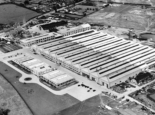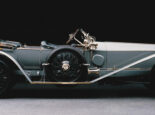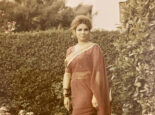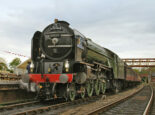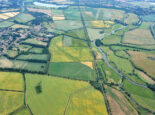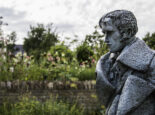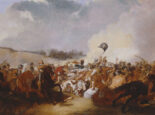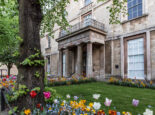Rolls-Royce: Part of Peterborough’s engineering DNA
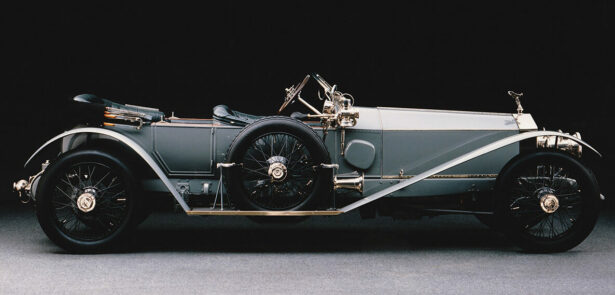
It’s just over 160 years since Henry Royce – co-founder of the Rolls-Royce empire – was born. His name is revered all over the world, thanks to the cars and aircraft that still bear his name. Less well-known is that he was born in Peterborough, learnt his engineering skills here – and the city is now his final resting place.
Most cities like to commemorate their famous sons and daughters, especially those who went on to change the world. But in the case of Sir Frederick Henry Royce, First Baronet of Seaton, OBE, you’ll be hard-pressed to find any kind of meaningful tribute to one of the most famous names in motoring and aviation, in his home city of Peterborough.
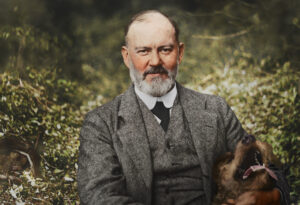
Sir Henry Royce in later life
There are no statues in his honour; that accolade belongs to Derby, where he would co-found the engineering dynasty that still flourishes today. In Peterborough itself though, you’ll just find a section of the Queensgate shopping centre car park named after him, while on the outskirts in Alwalton, where he was born over 160 years ago, there’s merely a 20th century housing development road referencing him.
Even the church of St Andrew’s has nothing more than a simple tablet on the wall to mark the spot where the ashes of one of Britain’s greatest technical visionaries lie.
Alwalton today is a quaint village of stone cottages, the imposing and sprawling Cuckoo pub and restaurant and a picture postcard-perfect thatched post office. All of these locations are ones that Henry would have known as a very young boy. Past the church, at the bottom of Mill Lane, there are also beautiful scenic walks around the Lynch alongside the River Nene, an obvious place for our chance visitor to be heading. Here though, Henry might struggle more with his surroundings. For it was on the banks of the Nene that he spent the first years after his birth on 27 March 1863, in the family-run flour mill that once stood there but which has long since disappeared.
His parents James and Mary only leased the mill from Peterborough’s Ecclesiastical Commissioners, rather than own it themselves. Increasing industrialisation and the spread of the railways during the Victorian age made it increasingly difficult for many traditional small concerns to survive and when Henry was four, the mill’s business failed. The family had to move out and relocated to London in search of work. However, the situation became even more dire in 1872 when James Royce died. Although he was only nine years old, Henry had to go out and earn money to help support the family. Cutting short his education after just one year of attending school, he sold newspapers for WH Smith and also delivered telegrams to help support his mother and four siblings.
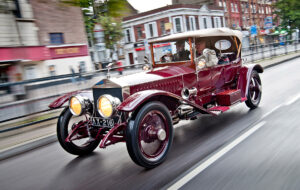
The leviathan 40/50 – better known as the Silver Ghost – is regarded as Henry’s greatest car creation and set the standard for all future Rolls-Royces
He returned to Peterborough aged 14, thanks to the financial assistance of an aunt. She came up with the £20 premium required to get him an apprenticeship with the Great Northern Railway at its workshops in the city. Peterborough at the start of the 19th century was a sleepy and small provincial city but the coming of the railways from 1845 caused its size and population to explode. Its location on the main line between London and Edinburgh, as a major junction, made it a prime location for the Great Northern Railway to site a major works.
Henry might well have stayed and gone onto a career on the railways, had not his aunt’s money ran out. After three years, he was forced to move back to London again. This time though, what he learnt in Peterborough stood him in good stead and he managed to get a post with the London Electric Light and Power Company, as a light tester, in 1882. His dedication to duty, plus the way he made up for the shortcomings in his education by attending night classes, impressed his bosses sufficiently to appoint him the chief electrical engineer of its northern subsidiary, the Lancashire Maxim and Western Electric Company, which at that time was introducing electric lighting to Liverpool. However, this regional offshoot failed and a once-again unemployed Henry decided to set up his own business in neighbouring Manchester. In collaboration with Ernest Claremont, a friend from Liverpool, he founded FH Royce and Company to manufacture small domestic electrical items such as switches, fuses and bell sets. Ernest contributed £50, Henry came in with £20 of his savings. From this small acorn sprouted a highly successful business that, by 1894, had expanded into making dynamos and electric cranes as well. On a personal level, things were also going well for Henry, with the delightfully-named Minnie Punt becoming his wife in 1893. However Henry was already well-used to things turning bad and the outbreak of a British Empire conflict in 1899 had major repercussions for him and his business, despite happening thousands of miles away. By now the company had changed its title to Royce Ltd and opened another factory. But the Second Boer War in South Africa brought about a decline in trade and domestic investment. This was in addition to increasing competition from overseas competitors in Germany and the USA. The firm went into a decline and Henry became ill through overwork and stress. His doctor suggested that one of the new- fangled automobiles might be a welcome distraction and help prevent him from over-exerting himself.
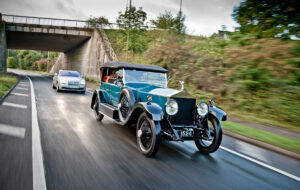
A Silver Ghost keeps company with one of its modern Rolls-Royce counterparts
So, in 1901, just a few months before the death of Queen Victoria ushered in the Edwardian era, Henry flung himself into the 20th century by buying a French De Dion Quadricycle car. The following year, this was supplemented by a secondhand Decauville. However, Henry found himself very disappointed with it and set about using his engineering knowledge to improve it. Actually, that’s an understatement. What he actually did was completely build a new car from scratch, albeit one based on the Decauville. He borrowed a corner of the factory workshop and two apprentices in order to do so. This was something his colleagues regarded with suspicion, as cars were still very new, dangerous and unreliable, with many people believing this flash-in-the-pan technology simply wouldn’t catch on. However, he was the boss and so largely left to his own devices and tolerated.
Royce meets Rolls
The first Royce car, the genesis of everything that would follow, appeared on April Fool’s Day, 1904. But it was far from a joke; the two-cylinder model with 1.8-litre 10hp engine was finished to an exceptionally high standard. Another two versions followed, with one ending up with Henry Edmunds, a director of the firm. He was so impressed that he sent a photograph and details to a friend who ran a French car agency in London – a certain Charles Stewart Rolls.
Charles was 15 years younger than Henry and came from a totally contrasting background; he was the son of a Baron and educated at Eton and Cambridge. He had formed CS Rolls and Company in 1902 to sell continental cars in London but his upper class background made him patriotically keen to find a suitable British model to sell as well. When he saw the Royce 10hp, he was intrigued enough to want to find out more. As a mark of how the social structure of the country was starting to shift with the dawn of 20th century, it was the posh Honourable Charles who travelled up to Manchester, rather than working-class lad-made-good Henry trekking down to London for an audience. The historic meeting, arranged by Henry Edmunds, took place over lunch at the Midland Hotel in Manchester on 4 May 1904, just over a month after the first Royce automobile had been finished. Its outcome was that Charles agreed to take as many cars as Henry could supply and sell them through his London agency. The proviso was that they would be badged as Rolls-Royces.
A legendary motoring name had been born. The company followed in 1906, when Charles and Henry formed Rolls-Royce Limited together. Rolls was the money, Royce supplied the brains and brawn. As chief engineer and works director, his salary was a then very impressive £1250 per annum plus four per cent of any profits over £10,000. Royce and Company continued as a separate entity up until 1932 when it was taken over.

St Andrew’s Church in Henry Royce’s birthplace of Alwalton, just outside Peterborough, where his ashes are kept
Henry prized high quality engineering and integrity, lived by the motto “Whatever is rightly done, however humble, is noble.” He set Rolls-Royce Limited along the path of prestige and luxury it continues to tread today. If a car component wasn’t up to his exacting standards, he would simply make an improved version. This made his cars very expensive, but also gave them an enviable reputation as the best in the world. His masterpiece creation, unveiled in 1906, proved highly noble yet far from humble. The Rolls-Royce 40/50 model – eventually to become more famously known as the Silver Ghost – was revealed at the London Motor Show of that year. The company only built bare chassis and fitted them with 7-litre (later 7.4-litre) engines and running gear. It was up to the affluent owners to commission suitably elegant and enormous bodies to grace them.
Another Peterborough link
Demand for Rolls-Royces soon dictated a move away from the original cramped Manchester factory. The company relocated to Derby in 1908, with motoring pioneer Lord Montagu of Beaulieu performing the opening ceremony for the factory that Henry had designed himself. He also moved his home to Derby, but the environment proved to be harsh on his delicate constitution, exacerbated by his tendency to work too hard and skip proper meals.
Things came to a head with the death of Charles in 1910, at the age of just 32. Ever the daredevil – he’d even raced Rolls-Royces during the first years of the company – Charles had developed an interest in aviation but was killed when his primitive Wright Flyer aircraft crashed at Bournemouth in 1910. He was the first Briton to die in a plane crash. Ironically, given Rolls-Royce’s later heavy involvement in aeronautics, he’d tried to convince Henry to design a plane engine as early as 1907, but the engineer declined. Henry took the death of his partner badly and his health collapsed. A complete rest was prescribed and he moved first to Overstrand, near Cromer in Norfolk, and then to Le Canadel in the south of France. While there in 1912, he was taken seriously ill and was rushed back to London in a Rolls-Royce 40/50 Silver Ghost converted into an ambulance. An operation saved his life but left him in a weakened state, probably not helped by the trauma of divorce from Minnie the same year.
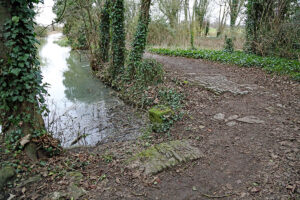
Hardly anything now remains of the Royce family mill, down by the River Nene at Awalton
1931, Rolls-Royce bought Bentley Motors, which had gone into receivership, and two years a prototype 3 1/2-Litre model was driven to West Wittering for the boss’ approval. He was critical of its suspension, believing a sporty car should have variable levels of stiffness. Soon afterwards, the 70- year old knocked up a design of a new adjustable shock absorber on the back of an envelope and gave it to his nurse and housekeeper, Ethel Aubin, to pass onto the “boys at the factory.” He died the following day, 22 April, 1933. His sketch didn’t reach Derby until after its creator had passed way.
Rolls-Royce initially kept his ashes beneath a statue of him at its Derby factory. But in 1937, the decision was taken to place them elsewhere. The company settled on St Andrew’s Church in Henry’s birthplace of Alwalton, where his – and its – story had started over three quarters of a century before. His legacy continues to this day, albeit with Rolls-Royce now split into two separate businesses. The car side still makes some of the most respected, prestigious and luxurious vehicles around, while the aviation arm is the world’s second-largest maker of aircraft engines, with revenue in the billions and around 40,000 employees.
And all this sprung from a small mill by the side of the River Nene and the steamy, grimy railway workshops of Victorian Peterborough…
The magic of the Rolls-Royce Merlin engine
A mark of Henry’s technical genius was demonstrated by the way he came up with the ‘R’ aircraft engine in 1928. While walking along the beach at West Wittering, he started sketching ideas in the sand. Within a year, the engine, installed in a Supermarine S6 aeroplane, had won the Schneider Trophy race and also set a new world air speed record of 357.7mph. The ‘R’ evolved during the early 1930s into the PV12 and then became the Rolls-Royce Merlin, which powered Spitfires, Hurricanes and Lancasters during the Second World War. Effectively, Henry’s rough drawings in the sand of a West Sussex beach helped save Britain just over a decade later. He was made a Baronet, of Seaton in Rutland (where his ancestors had been millers), in 1930 for his services to aviation, in addition to the OBE he’d received after the end of the First World War.
The Merlin engine has another link with Peterborough, other than the engineering wizard who magicked it up. During World War Two, when petrol-powered Merlin engines were vital to the RAF, the Peterborough engine firm of Perkins was asked to develop a diesel equivalent that could be used in small naval craft such as rescue, gun and torpedo boats. It was required to fit in exactly the same space as the Merlin and, at 33.3 litres capacity and two tons, was the largest and heaviest engine ever designed and produced at Perkins’ Peterborough plant.








